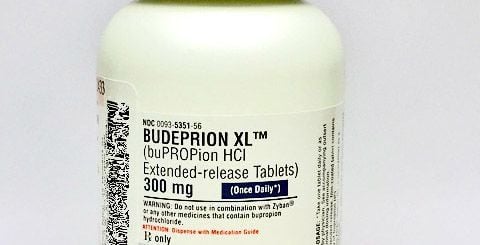This is an automatically translated article.
1. What is malnutrition?
Malnutrition is defined as a deficiency, imbalance or excess in a person's diet. It is affected by the absolute quantity but also by the quality of the diet.
Malnutrition can lead to low weight for height (thin body), short for age (malnutrition stunting) and low weight for age (underweight). Undernutrition is the result of poor food consumption in terms of quantity and quality or frequent illness.
Signs and symptoms of malnutrition can vary, depending on the type. The most common manifestation of malnutrition in children is unintentional weight loss, but children may also have one or more of the following symptoms:
Loss of fat and muscle mass Sunken cheeks and sunken eyes Enlarged abdomen Slow healing injury Dry hair and skin Fatigue Difficulty concentrating Depression and anxiety There are several other signs and symptoms, but these signs and symptoms vary according to the type of malnutrition and stage of life cycle affected . Impeded physical growth, impaired immunity, frequent illnesses, changes in the lining of the intestines, changes in hair and skin, restricted brain development, weak bones are some of the other symptoms.
Undernutrition leads to severe physical growth restriction and health problems, increasing the risk of infection as well as death. Therefore, it is necessary to detect malnourished children early for timely care and treatment.
2. How to detect malnourished children
To assess the nutritional status of children in the most comprehensive way, there are 3 indicators as follows:
Weight for age Height for age Weight for height Once these indicators are available, nutritionists will Nurses or physicians will compare it with the National Center of Health Statistics (NCHS) reference population recommended by the World Health Organization for children under 5 years of age (2006) and for school-age children. (2007).
Below is a table to assess the nutritional status of children:
A - Children under 5 years old
Table 1: Weight-for-age index with Z - core
| Chỉ số Z - core | Đánh giá |
| < - 3SD | Trẻ bị suy dinh dưỡng thể nhẹ cân, mức độ nặng |
| < - 2SD | Trẻ bị suy dinh dưỡng thể nhẹ cân, mức độ vừa |
| - 2SD <=Z- core<= 2SD | Trẻ bình thường |
| > 2SD | Trẻ bị thừa cân |
| > 3 SD | Trẻ bị béo phì |
Table 2: Height-for-age index with Z - core
| Chỉ số Z - core | Đánh giá |
| < - 3SD | Trẻ bị suy dinh dưỡng thể nhẹ cân, mức độ nặng |
| < - 2SD | Trẻ bị suy dinh dưỡng thể nhẹ cân, mức độ vừa |
| - 2SD <=Z- core<= 2SD | Trẻ bình thường |
| > 2SD | |
| > 3 SD |
Table 3: Weight-for-height index with Z - core
| Chỉ số Z - core | Đánh giá |
| < - 3SD | Trẻ bị suy dinh dưỡng thể nhẹ cân, mức độ nặng |
| < - 2SD | Trẻ bị suy dinh dưỡng thể nhẹ cân, mức độ vừa |
| - 2SD <=Z- core<= 2SD | Trẻ bình thường |
| > 2SD | Trẻ bị thừa cân |
| > 3 SD | Trẻ bị béo phì |
Table 4: BMI by age with Z - core
| Chỉ số Z - core | Đánh giá |
| < - 3SD | Trẻ bị suy dinh dưỡng thể nhẹ cân, mức độ nặng |
| < - 2SD | Trẻ bị suy dinh dưỡng thể nhẹ cân, mức độ vừa |
| - 2SD <=Z- core<= 2SD | Trẻ bình thường |
| > 2SD | Trẻ bị thừa cân |
| > 3 SD | Trẻ bị béo phì |

Phát hiện trẻ suy dinh dưỡng qua các chỉ số
B - Children aged 5 - 9 years old
Table 5: Weight for age index with Z - core
| Chỉ số Z - core | Đánh giá |
| < - 3SD | Trẻ bị suy dinh dưỡng thể nhẹ cân, mức độ nặng |
| < - 2SD | Trẻ bị suy dinh dưỡng thể nhẹ cân, mức độ vừa |
| - 2SD <=Z- core<= 2SD | Trẻ bình thường |
| > 2SD | Trẻ bị thừa cân |
| > 3 SD | Trẻ bị béo phì |
Table 6: Height-for-age index with Z - core
| Chỉ số Z - core | Đánh giá |
| < - 3SD | Trẻ bị suy dinh dưỡng thể nhẹ cân, mức độ nặng |
| < - 2SD | Trẻ bị suy dinh dưỡng thể nhẹ cân, mức độ vừa |
| - 2SD <=Z- core<= 2SD | Trẻ bình thường |
| > 2SD | |
| > 3 SD |
Table 7: BMI by age with Z - core
| Chỉ số Z - core | Đánh giá |
| < - 3SD | Trẻ bị suy dinh dưỡng thể nhẹ cân, mức độ nặng |
| < - 2SD | Trẻ bị suy dinh dưỡng thể nhẹ cân, mức độ vừa |
| - 2SD <=Z- core<= 2SD | Trẻ bình thường |
| > 2SD | Trẻ bị thừa cân |
| > 3 SD | Trẻ bị béo phì |
C - Children 10 - 19 years old
Table 8: Height-for-age index with Z - core
| Chỉ số Z - core | Đánh giá |
| < - 3SD | Trẻ bị suy dinh dưỡng thể nhẹ cân, mức độ nặng |
| < - 2SD | Trẻ bị suy dinh dưỡng thể nhẹ cân, mức độ vừa |
| - 2SD <=Z- core<= 2SD | Trẻ bình thường |
| > 2SD | |
| > 3 SD |
Table 9: BMI by age with Z - core
| Chỉ số Z - core | Đánh giá |
| < - 3SD | Trẻ bị suy dinh dưỡng thể nhẹ cân, mức độ nặng |
| < - 2SD | Trẻ bị suy dinh dưỡng thể nhẹ cân, mức độ vừa |
| - 2SD <=Z- core<= 2SD | Trẻ bình thường |
| > 2SD | Trẻ bị thừa cân |
| > 3 SD | Trẻ bị béo phì |
Based on the above tables, children's malnutrition can be classified clinically in the following ways:
Malnutrition: Weight-for-age index < -2SD compared with the NCHS standard population. This indicator represents a nutritional deficiency, but cannot assess whether the deficiency occurred during the current or previous period. But this is still considered the most easily applicable index in the community, so it is still often used by doctors as a standard indicator to assess the nutritional deficiency status of the community in all surveys on health issues. nutrition. This index is also used for early detection of micronutrient deficiencies in young children. After the diagnosis of malnutrition has been obtained, based on the remaining indicators to assess the specific nutritional status of malnutrition. Acute malnutrition: The expression of height-for-age index is normal, but the weight/height index < -2SD indicates that malnutrition has just taken place and the current diet is not suitable for the needs of the patient. young. Chronic malnutrition has been restored: The height-for-age index is < -2SD but the weight-for-height index is normal. It shows that the nutritional deficiency has occurred for a long time, the condition is severe and occurs early because it affects the development of the child's stature. But the nutritional status has now been restored, in these subjects it is necessary to be careful with the risk of obesity due to the effects of malnutrition complications such as low height. Chronic progressive malnutrition: The expression of height-for-age index < -2SD and weight-for-height index also < -2SD indicates that the nutritional deficiency has occurred in the past and continues to recur. at present. Fetal malnutrition: All assessments must be based on birth weight < 2500 grams, newborn length < 48 cm and head circumference < 35 cm. With all the above malnutrition classifications, an index < -2SD is moderate malnutrition, < -3SD is severe malnutrition.
For fetal malnutrition, only weight loss is mild malnutrition, weight and height loss is moderate malnutrition; Losing both weight, height, and head circumference is severe malnutrition.

Phát hiện trẻ suy dinh dưỡng để có biện pháp khắc phục kịp thời
3. Some necessary imaging tests for malnourished children
Timely diagnosis and detection of malnourished children is very important to prevent dangerous consequences. Diagnostic procedures to identify malnutrition in children include:
Measurement of upper arm mid-diameter: If mid-arm circumference is less than 110 mm, it is a clear sign of malnutrition in children Blood tests: Specific blood tests such as a complete blood count, blood sugar, blood protein or albumin levels, and other common blood tests to diagnose malnutrition in children. Other tests: The doctor also ordered other tests and images of malnourished children such as thyroid function; tests to determine the content of calcium, zinc and vitamins,... because they help identify malnutrition in children. In the case of malnourished children, it is important to find the root cause, detect the symptoms early and take immediate remedial measures to avoid lasting and irreversible damage to the child.
For children to be healthy and develop well, it is necessary to have a nutritious diet in terms of quantity and quality balance. If children are not provided with adequate and balanced nutrients, it will lead to diseases of excess or lack of nutrients, which adversely affect the comprehensive development of children in terms of physical, mental and motor skills.
Parents should supplement their children with supportive products containing lysine, essential micro-minerals and vitamins such as zinc, chromium, selenium, and B vitamins to help fully meet their child's nutritional needs. At the same time, these essential vitamins also support digestion, enhance nutrient absorption, help improve anorexia, and help children eat well.
For more nutritional knowledge and child care for each age, parents should regularly visit the website vimec.com and make an appointment with the leading doctors, pediatric and nutrition experts of the National General Hospital. Vinmec when needing advice on children's health.













